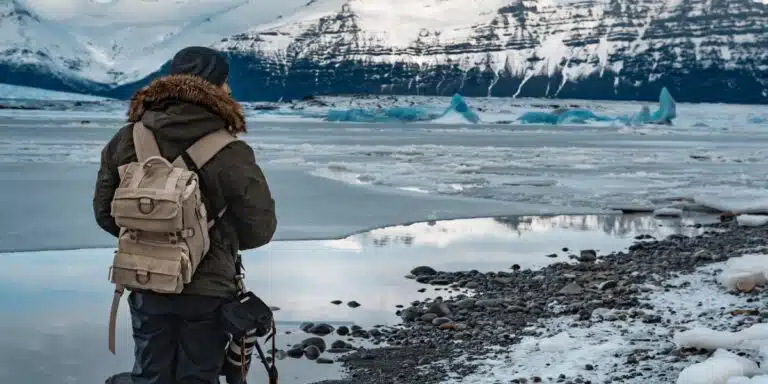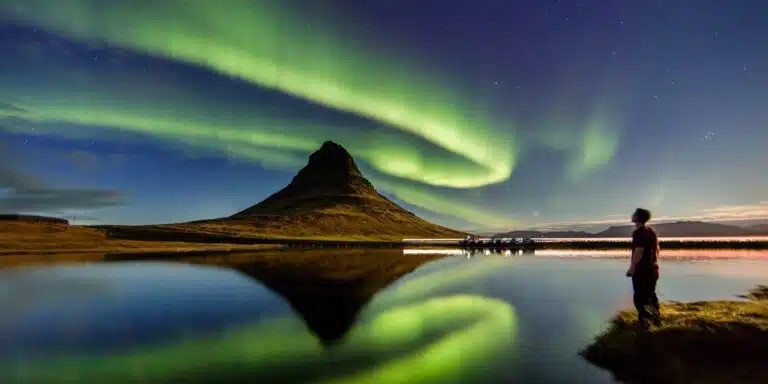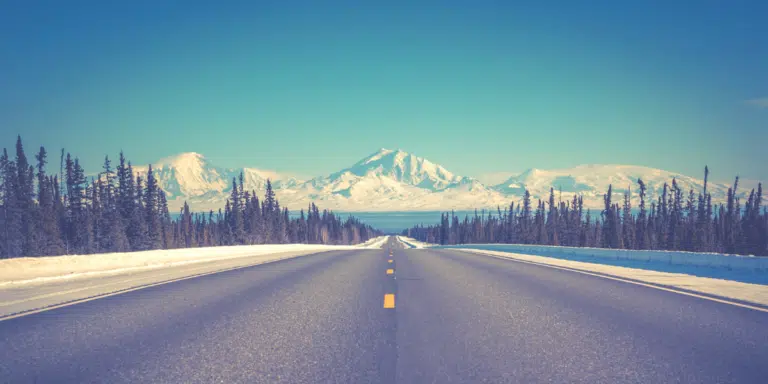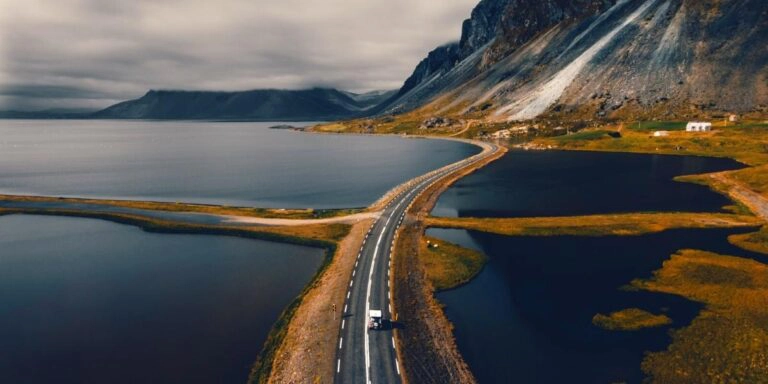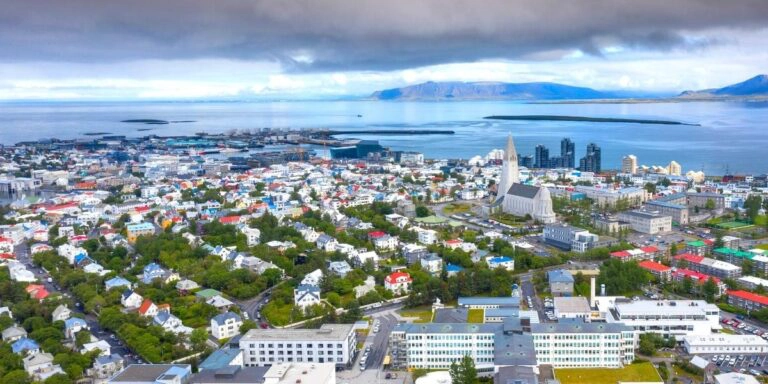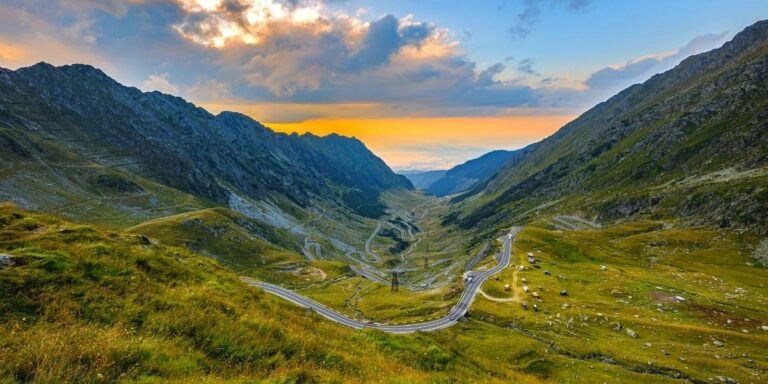This post may contain affiliate links, from which we earn an income. Click here to read our affiliate policy.
Our first night in Iceland felt like the worst decision we’d ever made. The campervan rental guy had explained the heater controls, but we were too excited to listen properly. After twenty minutes of pressing every button while freezing our butts off, we finally got the heating to work. But the wind outside was terrifying – we genuinely thought our van might blow over. We thought we might bail and find a hotel, which sounded pretty tempting at that point.
But we stuck it out, and then morning came, and everything changed.
We stepped outside and just stood there like idiots, staring. This incredible emptiness stretched out forever, with volcanic rock covered in the most vivid green moss we’d ever seen carpeting the landscape. There was complete silence except for the wind. No buildings, no roads, no signs that humans had ever been there.
We’d never experienced that kind of space before. Growing up in suburbia, you’re always surrounded by stuff – houses, stores, people. This was the complete opposite and the landscape made us feel incredibly small, but also somehow free. Right then, we knew we’d never go back to regular hotels for vacations.
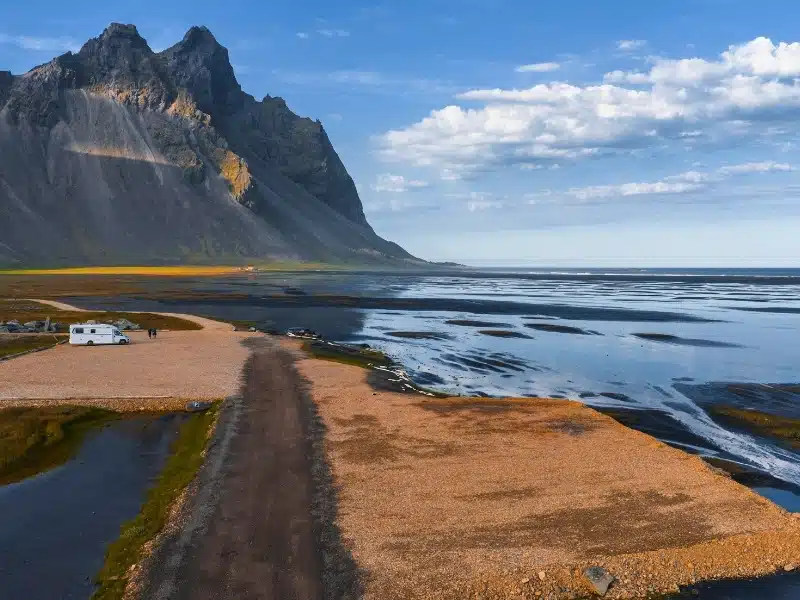
Benefits of Campervan Travel in Iceland
Hotels in Iceland cost serious money. We’re talking $250+ per night for basic rooms, then another $40-60 per meal at restaurants. A campervan cuts those costs immediately and gives you something hotels never can – total freedom to change your plans.
Weather changes? Drive somewhere new. Found an amazing hot spring that’s not in guidebooks? Park right there. Some of Iceland’s best spots are completely inaccessible to big tour buses, and cooking your own food saves hundreds while letting you eat decent meals instead of overpriced tourist fare.
The whole country seems built for road trips. With quality motorhome hire in Iceland, you get reliable transportation and accommodation rolled into one package.
Best Time to Travel
June through August brings nearly 24-hour daylight and access to every road, but costs skyrocket and popular spots get mobbed. Every famous waterfall and attraction had crowds of people taking selfies.
May and September are the sweet spot with decent weather, manageable crowds, and reasonable prices. Our best trip happened in late May when we had several incredible locations completely to ourselves.
April and October work for flexible travelers who don’t mind gambling with the weather. We’ve seen perfect April conditions and also watched people spend three days trapped in their vans during storms. Winter appeals only to Northern Lights hunters with serious 4WD skills and patience for four hours of grey daylight.
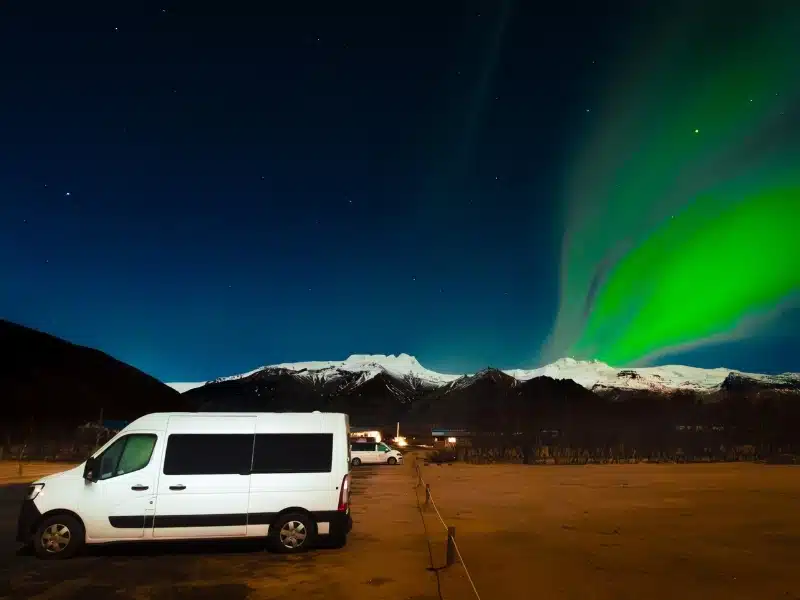
Important Rules & Safety
Wild camping became illegal for campervans in 2015, and the authorities enforce this seriously. Fines run to around $200 per violation. Use designated campsites only, of which Iceland has over 200 official options. The $187 Camping Card pays for itself after ten nights.
Download these essential apps before you go: 112 Iceland for emergencies (works without cell signal), SafeTravel for trip registration, Veður for weather updates (check this constantly), and road.is for current road conditions.
Smart fuel strategy: Fill up at Reykjavik’s Costco before heading out. They run about 20% cheaper than roadside stations, and with fuel at $2.50+ per liter, every bit helps.
Real Cost Breakdown
Basic campervans cost $100-200 daily during summer ($50-150 in winter). Luxury 4WD models can hit $200-350+ daily. When choosing rental companies, MotorhomeIceland.com offers solid vehicles with proper insurance coverage.
Budget $90-150 daily per person for basic travel, or $200-300 for more comfort. The complete Route 1 Ring Road costs roughly $225-300 just in fuel. Campsites charge $15-20 per person nightly, plus new parking fees of $5-10 at major attractions that add up quickly.
Packing Smart
Iceland’s weather changes faster than you can check forecasts. Layer everything: wool base layers, warm fleece middle layer, waterproof outer shell. A waterproof jacket and rain pants are absolutely essential – those Instagram shots behind waterfalls require proper gear, or you’ll be miserable and cold.
Pack your van efficiently. Packing cubes prevent tiny spaces from becoming disaster zones. Eye masks help during midnight sun periods when it’s as bright as noon at 11pm. Portable phone chargers are lifesavers in remote areas. Quick-dry towels work much better than regular ones at basic campsite facilities.

Ready for Adventure
Iceland rewards careful planning but punishes those who wing it. These are our top tips:

